When a meteorite falls on us. The consequences of meteorites of various diameters falling to the ground.
Meteorites have fallen to the ground many times: one fell quite recently - we are talking, of course, about the famous Chelyabinsk meteorite. There are others, no less famous and much larger, the consequences of whose fall were sometimes devastating.
1. Tunguska meteorite
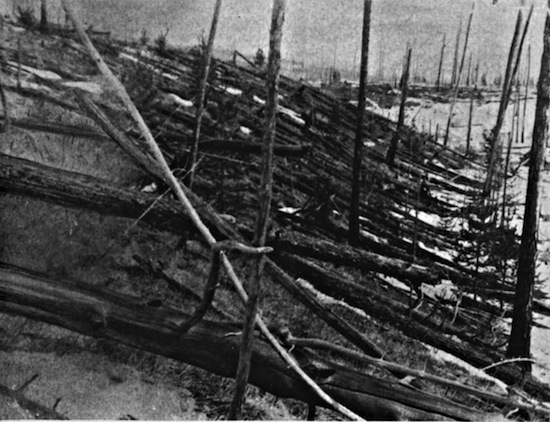
On June 17, 1908, at seven o'clock local time, an air explosion with a power of about 50 megatons occurred in the area of the Podkamennaya Tunguska River - this power corresponds to the explosion of a hydrogen bomb. The explosion and the subsequent blast wave were recorded by observatories all over the world, huge trees on an area of 2000 km² from the supposed epicenter were uprooted, and not a single intact glass was left in the houses of residents. After this, for several more days the sky and clouds in this area glowed, including at night.
Local residents said that shortly before the explosion they saw a huge fireball flying across the sky. Unfortunately, given the year of the incident, not a single photograph of the ball was taken.
None of the numerous research expeditions discovered any celestial body that could serve as a basis for the ball. Moreover, the first expedition arrived in the Tunguska region 19 years after the event described - in 1927.
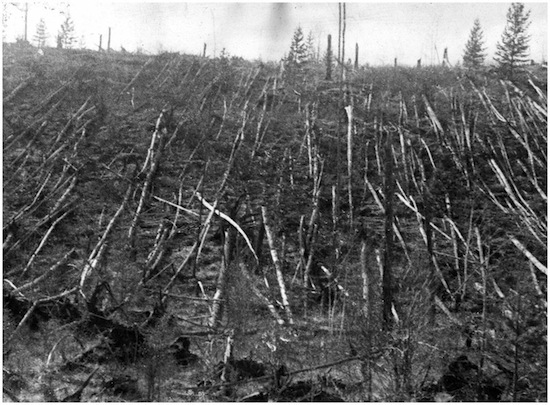
The event is attributed to the fall of a large meteorite to Earth, which later became known as the Tunguska meteorite, but scientists were unable to detect fragments of the celestial body or at least the matter remaining from its fall. However, in this place an accumulation of microscopic silicate and magnetite balls was recorded, which could not have arisen in this area for natural reasons, so they are attributed to cosmic origin.
It is still unknown exactly what caused the explosion: there is no official hypothesis, but the meteorite nature of the phenomenon still seems most likely.
2. Meteorite Tsarev
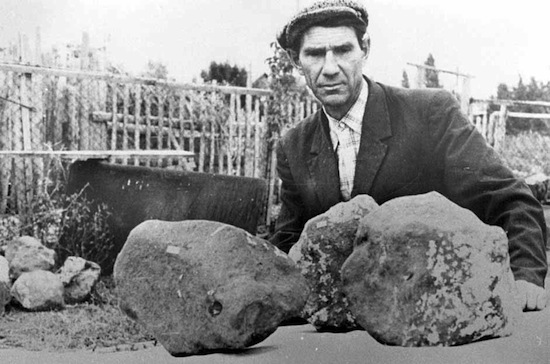
In December 1922, residents of the Astrakhan province were able to observe a stone falling from the sky: eyewitnesses said that the fireball was enormous in size and made a deafening noise in flight. Afterwards there was an explosion, and from the sky (again according to eyewitnesses) a rain of stones began to fall - the next day, farmers living in that area found fragments of stones of a strange shape and appearance in their fields.

The rumor about the incident quickly spread throughout Russia: expeditions arrived in the Astrakhan province, but for some reason they did not find any traces of the meteorite fall. They were found only 50 years later when plowing the fields of the Leninsky state farm - a total of 82 chondritic meteorites were found, and the fragments were scattered over an area of 25 km2. The largest fragment weighs 284 kg (now it can be seen in the Moscow Fersman Museum), the smallest is only 50 grams, and the composition of the samples clearly indicates their extraterrestrial origin.
The total weight of the found debris is estimated at 1225 kg, while the fall of such a large celestial body did not cause significant damage.
3. Goba
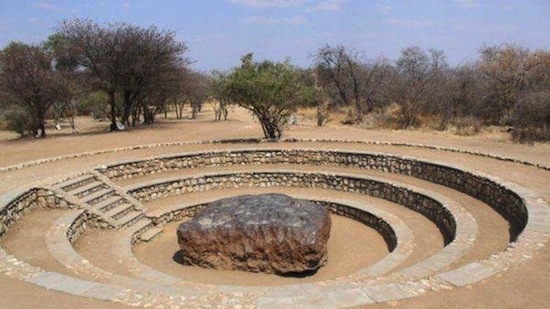
The largest intact meteorite in the world is the Goba meteorite: it is located in Namibia and is a block weighing about 60 tons and a volume of 9 m³, consisting of 84% iron and 16% nickel with a small admixture of cobalt. The surface of the meteorite is iron without any impurities: there is no other single piece of natural iron of such size on Earth.
Only dinosaurs could have observed Goba's fall to Earth: it fell on our planet in prehistoric times and was buried underground for a long time, until in 1920 it was discovered by a local farmer while plowing a field. Now the site has been given the status of a national monument, and anyone can see it for a small fee.
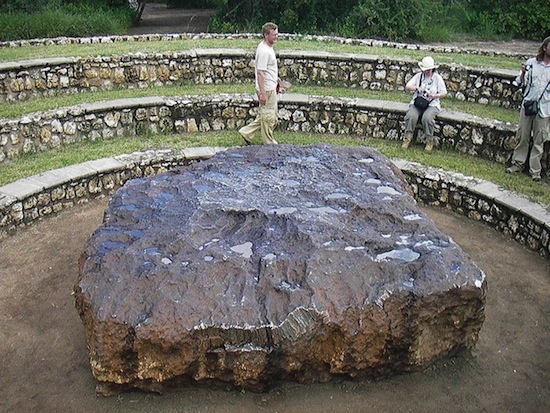
It is believed that when it fell, the meteorite weighed 90 tons, but over the millennia of its stay on the planet, erosion, vandalism and scientific research caused its mass to decrease to 60 tons. Unfortunately, the unique object continues to “lose weight” - many tourists consider it their duty to steal a piece as a souvenir .
4. Sikhote-Alin meteorite
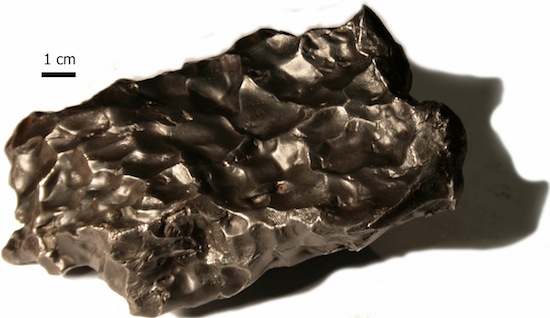
On February 12, 1947, a huge block fell in the Ussuri taiga - the event could be observed by residents of the village of Beitsukhe in the Primorsky Territory: as always happens in the case of a meteorite fall, witnesses spoke of a huge fireball, the appearance and explosion of which was followed by a rain of iron fragments, fell over an area of 35 km². The meteorite did not cause significant damage, but it made a number of craters in the ground, one of which was six meters deep.
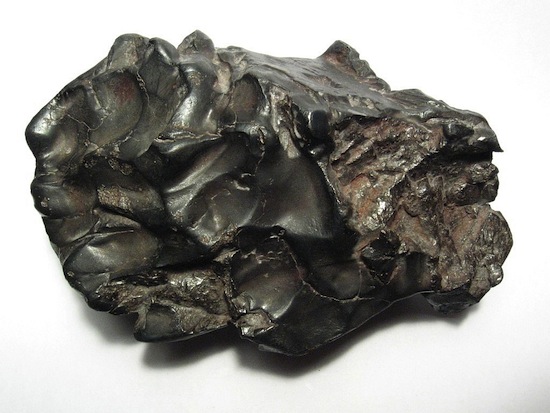
It is assumed that the mass of the meteorite at the time of entry into the Earth's atmosphere ranged from 60 to 100 tons: the largest of the fragments found weighs 23 tons and is considered one of the ten largest meteorites in the world. There are also several other large blocks formed as a result of the explosion - now the fragments are stored in the Meteorite Collection of the Russian Academy of Sciences and the Khabarovsk Regional Museum named after N. I. Grodekov.
5. Allende
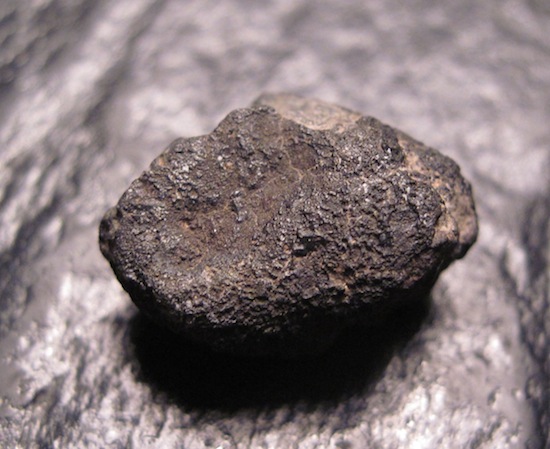
Allende fell to Earth on February 8, 1969 in the Mexican state of Chihuahua - it is considered the largest carbonaceous meteorite on the planet, and at the time of its fall its mass was about five tons.
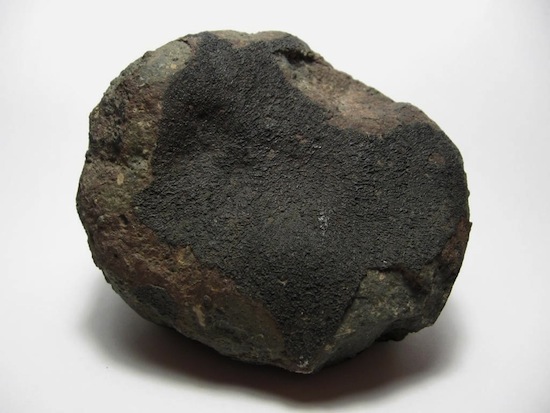
Today, Allende is the most studied meteorite in the world: its fragments are stored in many museums around the world, and it is notable primarily for the fact that it is the oldest discovered body in the Solar System, the age of which has been accurately determined - it is about 4.567 billion years old.
In addition, a previously unknown mineral, called pangite, was found in its composition for the first time: scientists suggest that such a mineral is part of many space objects, in particular asteroids.
Did you like the post? Support Faktrum, click:
Astrophysicists from Canada claim that the mass of the stream of meteorites bombarding our long-suffering planet exceeds 21 tons per year. But in most cases this goes unnoticed, since a person can observe and find meteorites only in the habitable zone.
The share of land on the Earth's surface is only 29%; the rest of the planet is occupied by the World Ocean. But even from this 29% it is necessary to take away places that are not inhabited by humans or are completely unsuitable for habitation. Therefore, finding a meteorite is a great success. However, there was a case when a meteorite itself found a person.
The case of a meteorite colliding with a person
In the entire history of celestial bodies falling to Earth, only one officially documented case of direct contact of a meteorite with a person is known.
It happened in the USA on November 30, 1954. A four-kilogram meteorite broke through the roof of a house and injured the owner’s leg. This means that there is still a risk that a more serious guest from outer space could fall on people’s heads. I wonder what the largest meteorite fell on our planet?
Meteorites are divided into three categories: stony, stony-iron and iron. And each of these categories has its own giants.
The largest stone meteorite
Relatively recently, on March 8, 1976, space presented the Chinese with a gift in the form of stones falling to the surface of the earth for 37 minutes. One of the fallen specimens weighed 1.77 tons. It was the largest meteorite that fell to earth, having the structure of a stone. The incident occurred near the Chinese province of Jilin. The space guest received the same name.
To this day, the Jilin meteorite remains the largest rock meteorite discovered on earth.
Largest ironstone meteorite
The largest representative of the category of iron-stone meteorites weighed 1.5 tons. It was found in 1805 in Germany.
A fellow German meteorite, found in Australia, weighed only 100 kg less than the German one.
But everyone was surpassed by the iron guest from space, whose weight was tens of times greater than all previously found meteorites.
Largest iron meteorite
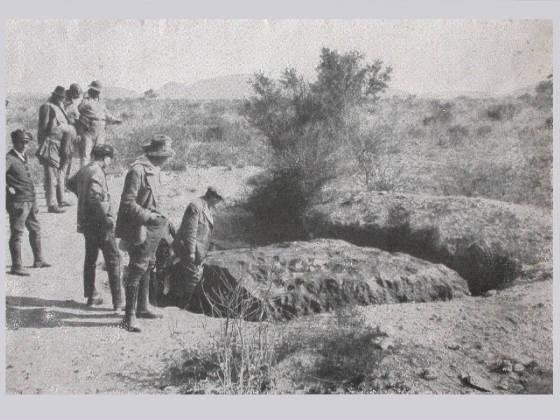
In 1920, an iron meteorite with a diameter of 2.7 meters and weighing over 66 tons was discovered in southwestern Namibia! A larger specimen than this has never been found on our planet. It turned out to be the largest meteorite to fall to Earth. It was named after the Goba West farm, whose owner came across it while cultivating a field. The approximate age of the iron block is 80 thousand years.
Today it is the largest solid block of natural iron.
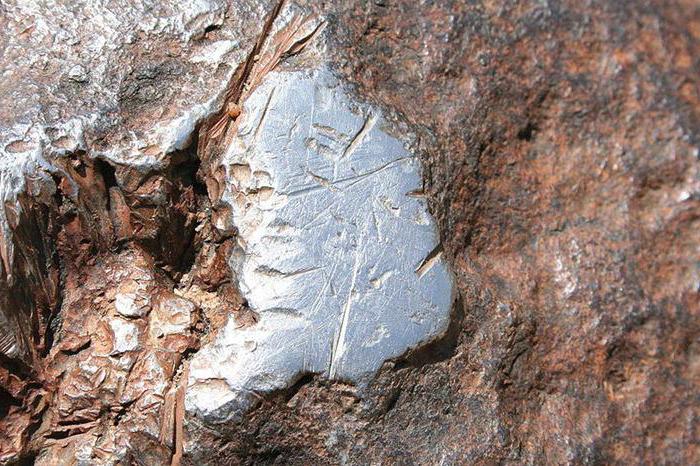
In 1955, the largest meteorite that fell to earth, Goba, was declared a national monument and taken under state protection. This was a necessary measure, since over the 35 years that the meteorite was in the public domain, it lost 6 tons in mass. Part of the weight was lost as a result of natural processes - erosion. But numerous tourists made the main contribution to the “weight loss” process. Now you can approach the celestial body only under supervision and for a fee.
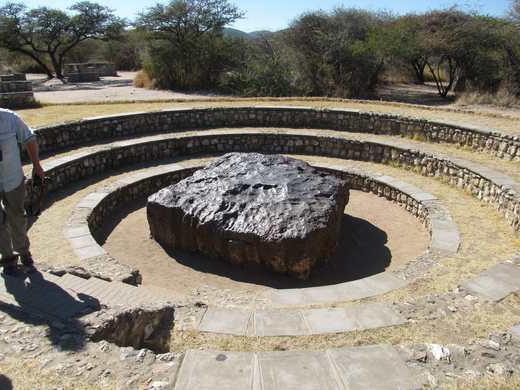
The meteorites mentioned above are, of course, the largest in their category ever discovered. But the question of which largest meteorite fell to earth remained open.
The meteorite that killed the dinosaurs
Everyone knows the sad story of the extinction of dinosaurs. Scientists are still arguing about the cause of their death, but the version that a meteorite was the culprit of the tragedy remains the main one.
According to scientists, 65 million years ago the Earth was hit by a huge meteorite, which caused a catastrophe on a planetary scale. The meteorite fell on the territory that now belongs to Mexico - the Yucotan Peninsula, near the village of Chicxulub. Evidence of this fall was the impact crater found in 1970. But since the depression was filled with sedimentary rocks, they did not carefully examine the meteorite. And only 20 years later scientists returned to study it.
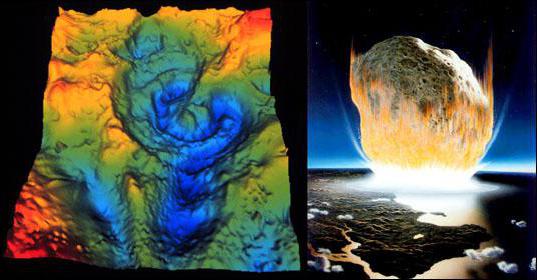
As a result of the work, it turned out that the crater left by the meteorite has a diameter of 180 km. The diameter of the meteorite itself was about 10 km. The impact energy during the fall was 100,000 Gtv (this is comparable to the simultaneous explosion of 2,000,000 of the largest thermonuclear charges).
It is assumed that a tsunami was formed as a result of the meteorite impact, the wave height varied from 50 to 100 meters. The dust particles raised during the impact tightly blocked the Earth from the Sun for several years, which led to a sharp climate change. and periodic large-scale fires aggravated the situation. An analogue of nuclear winter has arrived on the planet. As a result of the disaster, 75% of animal and plant species became extinct.
Nevertheless, officially the Chicxulub meteorite is the largest meteorite that fell to earth 65 million years ago. He practically destroyed all life on the planet. But in the history of meteorite falls on Earth, it ranks only third in size.
First among the giants
Presumably 2 billion years ago, a meteorite fell on Earth, leaving a mark 300 km in diameter on its surface. The meteorite itself supposedly had a diameter of more than 15 km.
The crater left after the fall is located in South Africa, in the Free State province, and is called Vredefort. This is the largest impact crater, and was left by the largest meteorite that fell to Earth in the entire history of our planet. In 2005, the Vredefort Crater was listed as a UNESCO World Heritage Site. The largest meteorite that fell to Earth did not leave a photo as a souvenir, but a huge scar in the form of a crater on the surface of our planet will not allow us to forget about it.
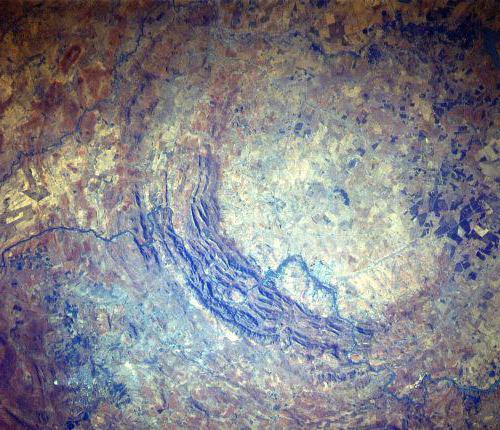
It has been noticed that the fall of meteorites, the size of which is measured at least tens of meters, occurs with a periodicity of hundreds of years. And larger meteorites fall even less frequently.
According to scientists, a new guest wants to visit Earth in 2029.
Meteorite named Apophis
The meteorite that threatens our planet was named Apophis (that was the name of the snake god, who was the antipode of the sun god Ra in Ancient Egypt). It is not known for certain whether it will fall to Earth or miss and pass near the planet. But what happens if a collision does occur?
Scenario of Apophis colliding with Earth
So, it is known that the diameter of Apophis is only 320 meters. When it falls to Earth, there will be an explosion equal in power to the 15,000 bombs dropped on Hiroshima.
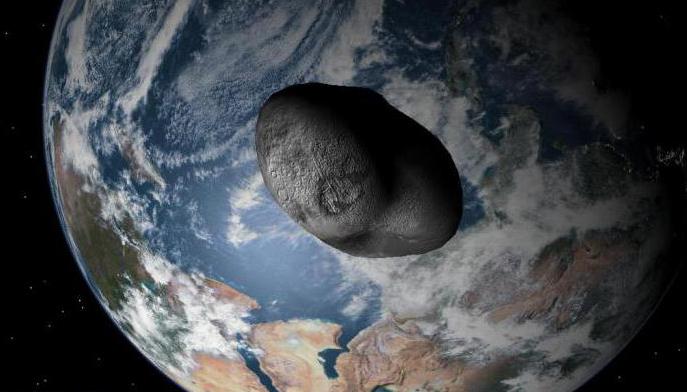
If Apophis hits the mainland, an impact crater will appear, having a depth of 400-500 meters and a diameter of up to 5 km. The resulting explosion will destroy permanent structures at a distance of 50 km from the epicenter. Buildings that do not have the strength of a brick house will be destroyed at a distance of 100-150 km. The column of dust will rise to a height of several kilometers and then cover the entire planet.
Stories spread by the media about nuclear winter and the end of the world are too exaggerated. The size of the meteorite is too small for such consequences. The temperature may drop by 1-2 degrees, but after six months it will return to normal. That is, the predicted catastrophe, if it does happen, will be far from global.
If Apophis falls into the ocean, which is more likely, a tsunami will occur that will cover coastal areas. The height of the wave will depend on the distance between the shore and the location of the meteorite fall. The initial wave can be up to 500 meters high, but if Apophis falls in the center of the ocean, then the wave reaching the shore will not exceed 10-20 meters. Although this is also quite serious. The storm will continue for several hours. All these events should be considered only as possible with some degree of probability. So will Apophis collide with our planet or not?
The probability of Apophis falling to Earth
Apophis will theoretically threaten our planet twice. The first time - in 2029, and then - in 2036. After conducting observations using radar installations, a group of scientists completely ruled out the possibility of a meteorite colliding with the earth. As for 2036, today the chance of a meteorite colliding with the Earth is 1:250,000. And every year, as the accuracy of calculations increases, the probability of a collision decreases.
But even with this probability, various options for forcing Apophis to deviate from course are being considered. Apophis is thus an object of interest rather than threat.
In conclusion, I would like to note that meteorites are severely destroyed when entering the earth’s atmosphere. When approaching the Earth, the speed of the fall of guests from space is 10-70 km/sec, and upon contact with a gaseous atmosphere, which has a fairly high density, the temperature of the meteorite increases to critical, and it simply burns up or is very badly destroyed. Thus, the atmosphere of our planet is the best protector against uninvited guests.
> The largest meteorites that fell to Earth
many tourists.
From time to time, cosmic bodies fall to Earth... more and less, made of stone or metal. Some of them are no larger than a grain of sand, others weigh several hundred kilograms or even tons. Scientists at the Astrophysical Institute of Ottawa (Canada) claim that several hundred solid alien bodies with a total mass of more than 21 tons visit our planet every year. The weight of most meteorites does not exceed a few grams, but there are also those that weigh several hundred kilograms or even tons.
The places where meteorites fall are either fenced off or, on the contrary, opened for public viewing so that everyone can touch the extraterrestrial “guest”.
Some people confuse comets and meteorites due to the fact that both of these celestial bodies have a fiery shell. In ancient times, people considered comets and meteorites to be a bad omen. People tried to avoid the places where meteorites fell, considering them a cursed zone. Fortunately, in our time, such cases are no longer observed, but on the contrary - the places where meteorites fall are of great interest to the inhabitants of the planet.
In this article we will recall the 10 largest meteorites that fell on our planet.
Sutter Mill (April 22, 2012)
The meteorite fell on our planet on April 22, 2012, the speed of the fireball was 29 km/sec. Flying over the states of California and Nevada, the meteorite scattered its burning fragments over tens of kilometers and exploded in the sky over the US capital. The power of the explosion is relatively small - 4 kilotons (in TNT equivalent). For comparison, the explosion of the famous Chelyabinsk meteorite had a power of 300 kilotons of TNT.
According to scientists, the Sutter Mill meteorite was formed at the birth of our solar system, a cosmic body more than 4566.57 million years ago.
Meteorites in China (February 11, 2012)

On February 11, 2012, hundreds of tiny meteorite stones flew over the territory of the People's Republic of China and fell over an area of over 100 km in the southern regions of China. The largest of them weighed about 12.6 kg. According to scientists, the meteorites came from the asteroid belt between Jupiter and Mars.
Meteorite from Peru (September 15, 2007)
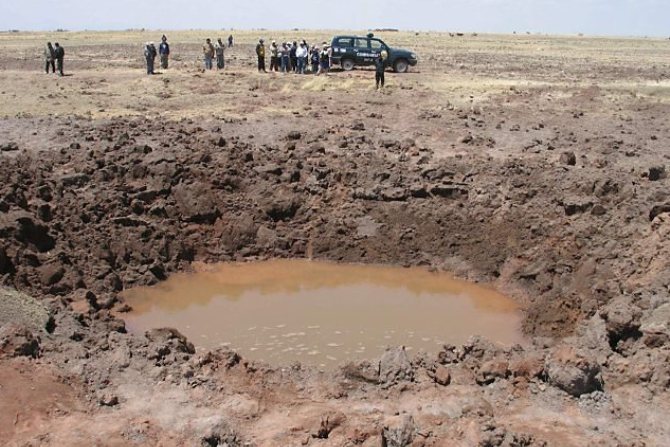
On September 15, 2007, a meteorite fell near Lake Titicaca (Peru) near the Bolivian border. According to eyewitnesses, the event was preceded by loud noise. Then they saw a body engulfed in fire falling. The meteorite left a bright trail in the sky and a stream of smoke, which was visible several hours after the fireball fell.
A huge crater, 30 meters in diameter and 6 meters deep, formed at the crash site. The meteorite contained toxic substances, as people living nearby began to have headaches.
Stone meteorites (92% of the total) consisting of silicates most often fall to Earth. The Chelyabinsk meteorite is an exception; it was iron.
Turkmen meteorite Kunya-Urgench (June 20, 1998)
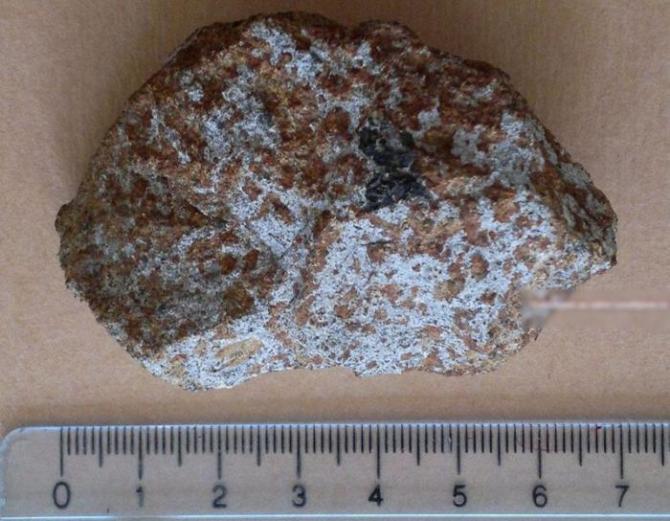
The meteorite fell on June 20, 1998 near the Turkmen city of Kunya-Urgench, hence its name. Before the fall, local residents saw a bright flash. The largest part of the car weighs 820 kg; this piece fell into a field and formed a 5-meter crater.
According to geologists, the age of this celestial body is about 4 billion years. The Kunya-Urgench meteorite is certified by the International Meteorite Society and is considered the largest of all fireballs that fell in the CIS and third world countries.
Meteorite Sterlitamak (May 17, 1990)
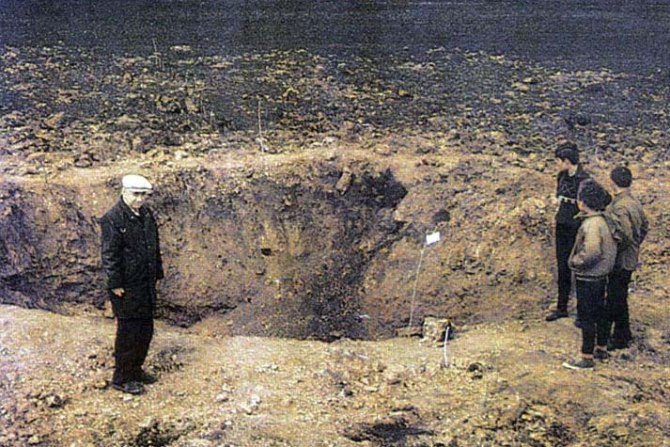
The Sterlitamak iron fireball, whose weight was more than 300 kg, fell on May 17, 1990 on a state farm field west of the city of Sterlitamak. When the celestial body fell, a crater of 10 meters was formed.
Initially, small metal fragments were discovered, but a year later scientists managed to extract the largest fragment of the meteorite weighing 315 kg. Currently, the meteorite is in the Museum of Ethnography and Archeology of the Ufa Scientific Center.
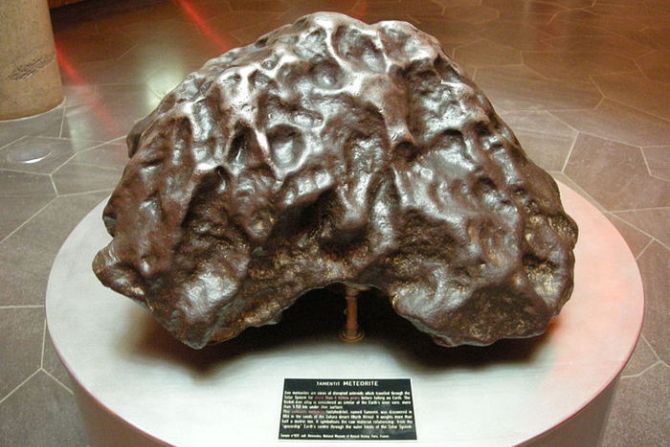
This event took place in March 1976 in Jilin province in eastern China. The largest meteor shower lasted more than half an hour. Cosmic bodies fell at a speed of 12 km per second.
Only a few months later, about a hundred meteorites were found, the largest - Jilin (Girin), weighed 1.7 tons.
Sikhote-Alin meteorite (February 12, 1947)
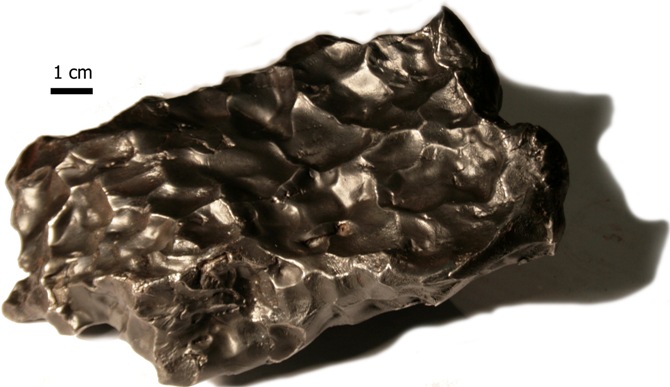
This meteorite fell on February 12, 1947 in the Far East in the city of Sikhote-Alin. The bolide was crushed in the atmosphere into small iron pieces, which scattered over an area of 15 sq. km.
Several dozen craters with a depth of 1-6 meters and a diameter of 7 to 30 meters were formed. Geologists have collected several tens of tons of meteorite matter.
Goba meteorite (1920)
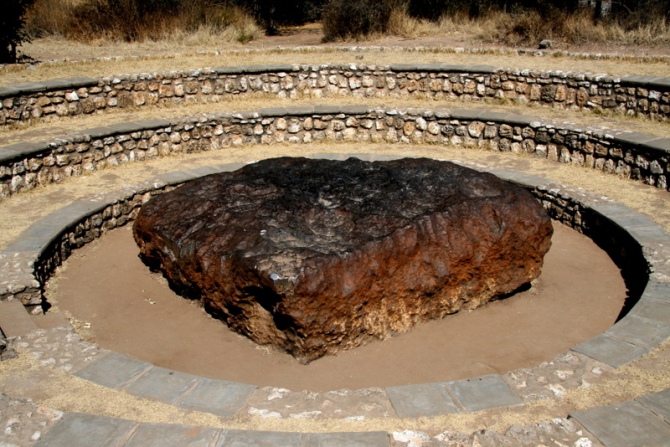
Meet Goba - one of the largest meteorites found! It fell to Earth 80 thousand years ago, but was found in 1920. A real giant made of iron weighed about 66 tons and had a volume of 9 cubic meters. Who knows what myths the people living at that time associated the fall of this meteorite with.
Composition of the meteorite. This celestial body is 80% iron and is considered the heaviest of all meteorites that have ever fallen on our planet. Scientists took samples, but did not transport the entire meteorite. Today it is located at the crash site. This is one of the largest pieces of iron on Earth of extraterrestrial origin. The meteorite is constantly decreasing: erosion, vandalism and scientific research have taken their toll: the meteorite has decreased by 10%.
A special fence was created around it and now Goba is known throughout the planet, many tourists come to it.
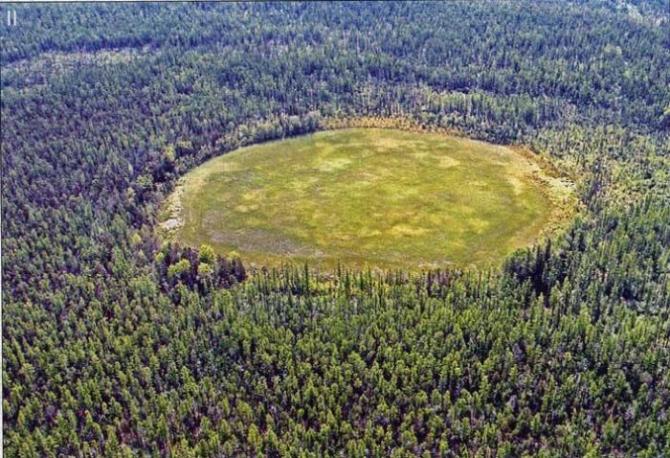
The most famous Russian meteorite. In the summer of 1908, a huge fireball flew over the territory of the Yenisei. The meteorite exploded at an altitude of 10 km above the taiga. The blast wave circled the Earth twice and was recorded by all observatories.
The power of the explosion is simply monstrous and is estimated at 50 megatons. The flight of the space giant is hundreds of kilometers per second. Weight, according to various estimates, varies - from 100 thousand to one million tons!
Fortunately, no one was hurt. A meteorite exploded over the taiga. In nearby settlements, a window was broken by the blast wave.
Trees fell as a result of the explosion. Forest territory of 2,000 sq. turned into rubble. The blast wave killed animals within a radius of more than 40 km. For several days, artifacts were observed over the territory of central Siberia - luminous clouds and a glow in the sky. According to scientists, this was caused by noble gases that were released when the meteorite entered the Earth's atmosphere.
What was it? The meteorite would have left a huge crater at the crash site, at least 500 meters deep. Not a single expedition has been able to find anything like this...
The Tunguska meteor, on the one hand, is a well-studied phenomenon, on the other, one of the biggest mysteries. The celestial body exploded in the air, the pieces burned up in the atmosphere, and there were no remains left on Earth.
The working name “Tunguska meteorite” appeared because this is the simplest and most understandable explanation of the flying burning ball that caused the explosion effect. The Tunguska meteorite has been called a crashed alien ship, a natural anomaly, and a gas explosion. What it was in reality, one can only guess and build hypotheses.
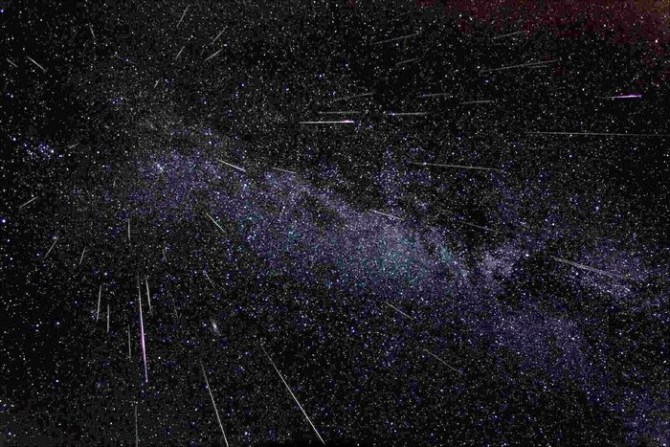
On November 13, 1833, a meteor shower occurred over the eastern United States. The duration of the meteor shower is 10 hours! During this time, about 240 thousand small and medium-sized meteorites fell on the surface of our planet. The meteor shower of 1833 is the most powerful meteor shower known.
Every day, dozens of meteorite showers fly near our planet. About 50 potentially dangerous comets are known that can cross the Earth's orbit. Collisions of our planet with small (not capable of causing much harm) cosmic bodies occur once every 10-15 years. A particular danger for our planet is the fall of an asteroid.
Surprises from space
At 9:20 a.m. on February 15, 2013, residents of the Urals and Kazakhstan witnessed an incredible space show: a bright fireball flashed over their heads and exploded over Chelyabinsk 13 seconds after entering the atmosphere. In the evening of the same day, the “big brother” of the Chelyabinsk meteorite, asteroid 2012 DA14 the size of a 15-story building, flew very close to the Earth. It flew at a distance of 26 thousand kilometers from our planet, so the second show did not happen.
The visit of the space guest did not result in casualties, but about one and a half thousand residents of the city and region suffered from broken windows and panic. Economic damage, according to regional officials, amounted to over a billion rubles.
Shot from DVR/youtube
The Chelyabinsk meteorite was the first whose fall was comprehensively studied and documented. The falling car was filmed on thousands of Chelyabinsk residents' car recorders, and a whole team of geologists led by Viktor Grokhovsky, who caught the Chelyabinsk from the bottom of Lake Chebarkul in October 2013, hunted for its remains.
The fall of Chelyabinsk, the largest object to collide with the Earth since the Tunguska meteorite, shook the public, politicians and the scientific community. Network users began to watch disaster films about asteroids and comets, and politicians were surprised to discover that the Earth is not in empty space, but surrounded by thousands of huge objects that threaten to destroy a large part of the planet.
 The site of the fall of the Tunguska meteorite. Traces of a forest fire and forest fall
The site of the fall of the Tunguska meteorite. Traces of a forest fire and forest fall
A direct result of the Chelyabinsk meteorite fall was a tripling of NASA's budget for monitoring and combating near-Earth objects. Russian officials have announced their readiness to create a system that would shoot down visitors from space using thermonuclear warheads, and promised to develop an early warning program under the auspices of the Ministry of Emergency Situations by 2020.
On both sides of the ocean, people had the same questions: why was the Chelyabinsk not discovered before it fell? How is it possible and is it possible in principle to combat such a cosmic threat? What do the falling celestial stones threaten us with and how much does it cost to protect ourselves from them?
Space Population Census
The answer to the question why the meteorite was not discovered in time is quite simple: small celestial bodies with a diameter of about 20 meters, like Chelyabinsk, are not considered by asteroid hazard experts to be capable of causing serious harm to the Earth and therefore do not closely monitor them.
Although scientists still keep an eye on such celestial stones with the help of robotic telescopes as part of the Catalina Sky Survey, Pan-STARRS and many other public and private initiatives. But the main “responsible” for the search for potential killers of humanity is the orbital infrared telescope WISE, which finds even asteroids invisible from Earth, which almost do not reflect light.
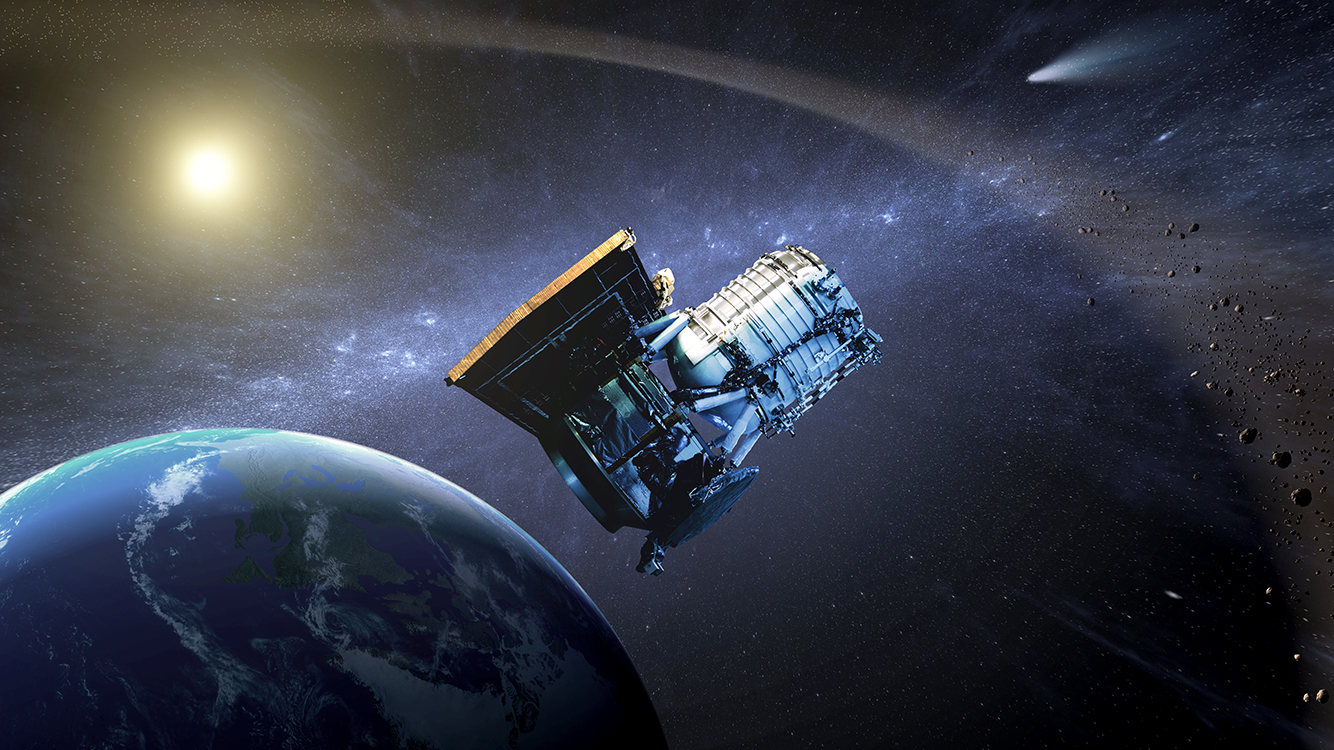 WISE telescope, photo: NASA
WISE telescope, photo: NASA
Based on the results of the work of the telescope, NASA in 2010 and 2011 published a catalog of near-Earth objects - about 18.5 thousand in total, and also used the danger criteria developed at the Massachusetts Institute of Technology (Turin scale), according to which all asteroids in the NEOWISE catalog were colored according to the probability of their collision with the Earth from white (no danger) to red (collision imminent).
Good news: as of today, all objects in this catalog are white. This means that so far scientists have not been able to find a single near-Earth asteroid whose probability of falling to Earth in the next 200 years exceeds 1%, or three on the Turin scale. Periodically, objects with non-zero danger scores appeared in the catalog, but as their orbits were refined, they quickly dropped first to one, and then to zero.
Two asteroids - Apophis and Bennu - were assigned very high hazard index values when they were discovered. Opened in 2004, the 350-meter Apophis (by the way, it was named not in honor of the ancient Egyptian god Apep, but in honor of the villain from the TV series Stargate: SG-1) first received a record two at that time, and then a four on the Turin scale. The collision with Earth was supposed to occur in 2036.
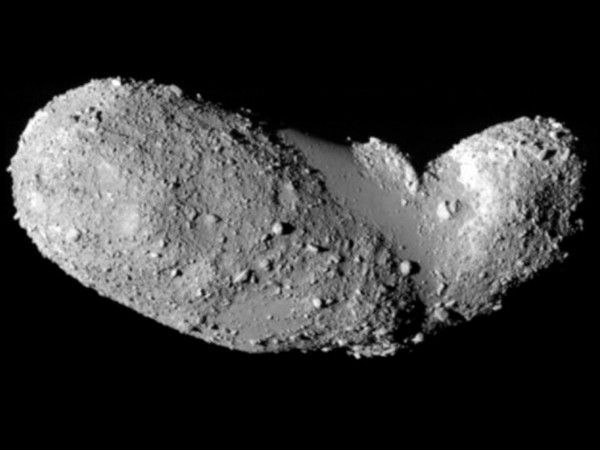 A photograph of the Itokawa asteroid taken during the Japanese Hayabusa mission in 2005. Presumably, the asteroid is identical in composition and size to Apophis. Photo: ISAS/JAXA
A photograph of the Itokawa asteroid taken during the Japanese Hayabusa mission in 2005. Presumably, the asteroid is identical in composition and size to Apophis. Photo: ISAS/JAXA
Two years later, when astronomers refined the asteroid’s orbit, it was lowered first to one and then to zero. The probability that Apophis will meet Earth is estimated at 0.00089%, or one chance in 112 thousand. Today, the most dangerous near-Earth object is considered to be the 500-meter Apollo asteroid 2009 FD, which may fall to Earth in 2185 with a probability of 0.29%.
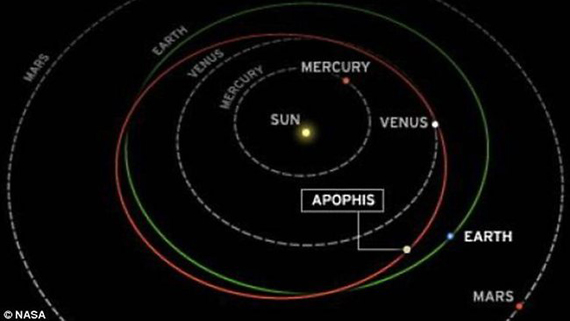 Orbit of Apophis
Orbit of Apophis
As for objects the size of Chelyabinsk, scientists cannot estimate how often they can fall to Earth and whether the real threat is great. In 2011, at the first presentation of the NEOWISE catalog, NASA reported that today we know only about five thousand asteroids about one hundred meters in size, while their total number is estimated at several tens of thousands. The number of smaller objects within the main asteroid belt may reach a million.
Made from something
It is impossible to accurately assess the damage due to the fact that we know very little about the composition of asteroids, and this is critical information, without which it is impossible to assess the consequences of the fall of a hypothetical “Apophis” to Earth.
The idea of studying asteroids “in situ” has been in the minds of astronomers for quite some time. The pioneer in this matter was the Japanese Hayabusa probe, which went to the Itokawa asteroid in 2008 in order to collect soil samples. Due to numerous breakdowns and fantastic bad luck, the Hayabusa managed to collect only one and a half thousand dust particles, which it nevertheless delivered to Earth in 2010.
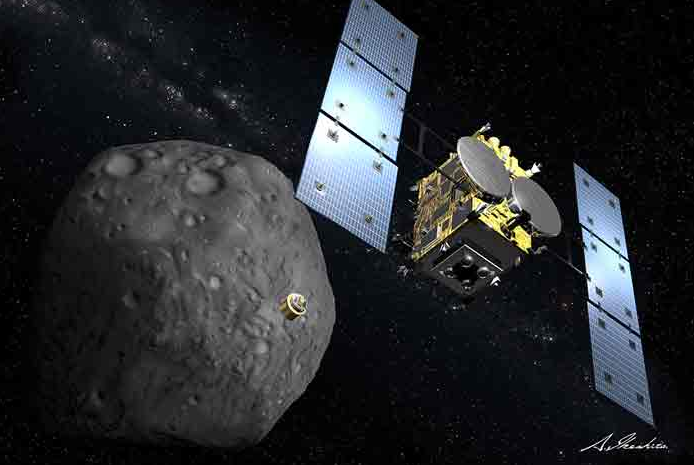 Hayabusa-2. Image: JAXA
Hayabusa-2. Image: JAXA
In the winter of 2014, the successor of the unsuccessful probe, the Hayabusa-2 apparatus, set off for the asteroid 1999 JU3, which will arrive at the target in 2018. In parallel, NASA is developing its own mission, OSIRIS-REx, which will fly to Bennu in 2016 with the same mission as Hayabusa.
The lack of specific data on the composition of asteroids does not prevent engineers from dreaming of defense systems against celestial guests. One of the many projects is the DE-STAR system, which should properly heat a dangerous asteroid and knock it off its path. According to the calculations of the authors of the idea, a platform 100 meters in size will be enough to push Apophis out of its orbit, and a ten-kilometer laser will be enough to completely evaporate it.
In addition, there are projects like the NEOShield or ISIS probes, a potential “companion” of OSIRIS-REx, which involve diverting asteroids from their intended course with a “right hook” - a collision with a heavy metal blank. As an option, engineers propose attaching a heavy satellite to the stone, which will change the orbit of the celestial body. Russian scientists from the Institute of Space Research are planning to shoot down asteroids with the help of other asteroids.
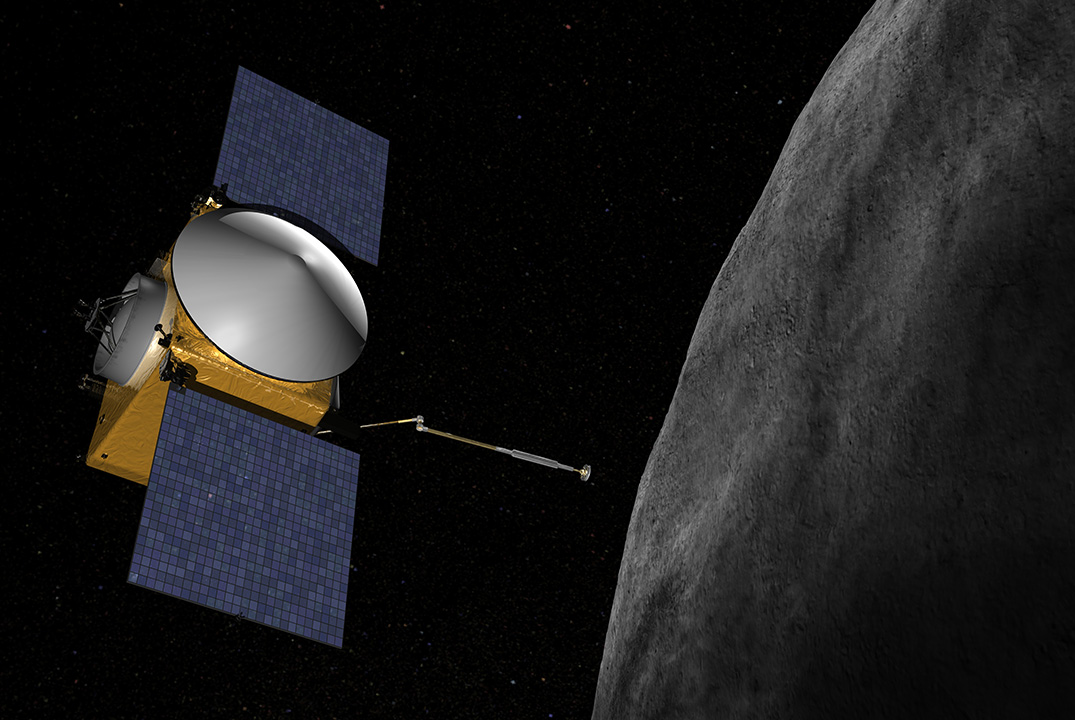 Artist's rendering of OSIRIS-REx. Image: University of Arizona/Goddard/NASA
Artist's rendering of OSIRIS-REx. Image: University of Arizona/Goddard/NASA
Until Hayabusa2 and OSIRIS-REx reach their targets, scientists can only guess at the exact mineral and chemical composition of the asteroids. The composition of celestial bodies can be determined from their spectra, but due to collisions with other bodies, the surface of asteroids can radically change color, so the spectrum will deceive astronomers. Without knowing the composition, one can only approximately estimate the consequences of the fall of space rocks, based on what disasters the Earth has already experienced in the past.
Well forgotten old
The most famous and studied trace of such falls is the Chicxulub crater on the Yucatan Peninsula in southern Mexico. The fall of a 10-kilometer cosmic “boulder” 65.5 million years ago left a crater with a diameter of 180 kilometers and led to catastrophic consequences: it is believed that it was because of the fall of the meteorite that dinosaurs and a fair part of the Mesozoic fauna became extinct.
And this is not the worst option: the diameter of the Vredefort crater in South Africa, apparently left by a meteorite, is 300 kilometers. The “pebble” fell to Earth about two billion years ago, when microbes dominated the planet. Just recently, scientists discovered in Australia an as yet unnamed crater with a diameter of 400 kilometers, which arose about 300-420 million years ago.
Another thing is that not many traces of encounters with small asteroids - up to several hundred meters - are known, so the consequences of the fall of such stones on cities and densely populated countries cannot be determined.
One of the few examples of such events is the so-called “Clovis Comet” - an object supposedly the size of the Tunguska meteorite (scientists do not agree whether it was an asteroid or a comet), which fell into the New World approximately 13 thousand years ago. Its fall caused large-scale fires, a sharp cooling due to clouds of ash and aerosol particles, the extinction of the remains of megafauna and the disappearance of the Clovis culture, the first tribes of the American Indians.
Only in 2013 did geologists manage to localize the crash site of this object: it crashed in the province of Quebec in Canada, but the crater itself has not yet been found. So it may very well be that the Clovis Comet was relatively small.
What to do?
This question is regularly asked to the head of NASA and Russian space officials. As the current head of the American Space Agency put it, so far humanity has only one option - “pray,” since the problem has been ignored for decades and there are no effective means for destroying and 100% detecting asteroids.
Moreover, until the results of the Hayabusa and Osiris studies are received, as well as complete catalogs of near-Earth asteroids, governments are unlikely to allocate money for anything other than prayer. Politicians remember celestial surprises only when the next Chelyabinsk falls, and their ardor quickly cools when they see calculations of the amounts that need to be invested in protecting the Earth. So today humanity can only hope for commercial projects for the “development” of asteroids - perhaps the data they collect on small celestial bodies and comets will convince officials to seriously think about the future of the planet.
Alexander Telishev
One of the most famous and largest meteorites that fell to Earth is the Tunguska meteorite.
As long as our planet has existed, and this is approximately 4.5 billion years, heavenly stones have been falling on it - meteorites arriving from different parts of the solar system. Their sizes were very different, but only the largest of them leave the largest craters on Earth from meteorites.
Tunguska meteorite
It was the largest meteorite to fall to Earth in the 20th century. The most famous Tunguska disaster in the world happened in 1908, when something exploded at an altitude of several kilometers in the area of the Podkamennaya Tunguska River in Eastern Siberia.
- The power of the explosion was subsequently estimated at 40 megatons.
- The forest fell over an area of 2000 square meters. km.
- The blast wave repeatedly circled the globe.
- After that, a glow was observed in the sky for several more nights.
- Added to the consequences of the cataclysm was a powerful magnetic storm that lasted for 5 hours.
A number of expeditions carried out over the following decades did not find any remains of the object itself, and many different hypotheses were put forward in this regard.
Chelyabinsk meteorite
This is, of course, the largest meteorite that fell to Earth, the second video of which was made after the Tunguska meteorite. It fell on February 15 and was a topic of discussion for another six months. The bolide exploded at an altitude of 23 km above Chelyabinsk, causing a powerful shock wave that circled the planet twice. Before the explosion, the meteorite had a mass of about 10,000 tons, and its diameter was 17 m. After the explosion, the metal block shattered into fragments of various sizes, the largest of which weighed about 500 kg. Residents of the region decided to make a monument from a stone raised from the bottom of a reservoir.
Goba meteorite (Namibia)
This is the largest meteorite that fell to Earth and was found not destroyed. Its diameter is almost 3 meters and it weighs over 60 tons. This block fell on the land of present-day Namibia about 80 thousand years ago, but it was found only in 1920. The owner of the Goba West farm, located in the southwest of Namibia, was plowing his field when he came across a huge piece of iron. The meteorite was given a name from the name of the farm. It is the largest piece of naturally occurring iron found on the planet, as it contains 84% of the metal. In 1955, to prevent acts of vandalism, the meteorite was declared a national monument, but by that time it had already lost 6 tons. Finally, the owner of the farm handed over the meteorite, along with the earth beneath it, into the hands of the state, which now protects the heavenly guest.
Sikhote-Alin meteorite
This famous meteorite is one of the largest to fall in Russia. Its fall occurred in the territory of the Primorsky Territory in the Sikhote-Alin mountains and occurred in 1947. The dazzling light from the fireball was visible in Khabarovsk and settlements scattered within a radius of 400 km. A block of iron, weighing about 23 tons, when flying through the atmosphere, broke up into myriads of fragments that rained down like meteorites. On the surface of the earth, 30 craters from debris with diameters of 7-28 meters and depths of up to 6 meters were discovered. The largest meteorite fragment found weighs 1,745 kg. The pilots of the Far Eastern Geological Department were the first to report the crash site of the heavenly wanderer. The proportion of iron in the meteorite, according to chemical analysis, was 94%.
Allende meteorite (Mexico)
This is the largest meteorite on Earth among those that have been well studied. In February 1969, the unsuspecting residents of the Mexican town of Chihuahua were awakened at about one in the morning by a roar and a bright flash, caused by the fall of a huge meteorite weighing 5 tons. Many of its fragments were scattered over tens of kilometers, their total mass was estimated at 2-3 tons. These small pieces quickly scattered throughout the world's museums and institutions. The meteorite was named Allende, it became the largest and most studied carbonaceous meteorite. American astronomers from the Livermore National Laboratory at the US Department of Energy said in their report that the chemical composition of the meteorite was rich in inclusions of aluminum and calcium, and its age was probably older than any of the planets orbiting the Sun.
Largest meteor shower
In the Chinese province of Jilin in 1976, the largest rain of stone meteorites in human history occurred. The end of the world lasted more than half an hour, during which time stones flying at a speed of 12 km/sec crashed into the ground. Later, they managed to find about a hundred stones, the largest of which (1.7 tons) was given its own name Jilin.
Meteorite Kunya-Urgench
In the summer of 1998, a meteorite named after the city fell near the city of Kunya-Urgench (Turkmenistan). His fall, as usual, was accompanied by a bright light. The car fell apart, and its most massive fragment (820 kg) left a five-meter crater on the ground. Luckily, no local residents were injured as the stone fell into a cotton field. Scientists have confirmed that the meteorite is more than four billion years old. This is the largest celestial guest to visit Central Asia, and among the known stone meteorites that previously fell to Earth, it is the third largest specimen. Most often, stone meteorites fall on our planet; they account for about 93% of all collisions with celestial objects.
Sterlitamak meteorite
In 1990, on the night of May 17, a meteorite weighing 315 kg fell two dozen kilometers from Sterlitamak. It was named after the city, and at the site where it fell on the field of a local state farm, the meteorite left a crater measuring 10 meters. And not immediately, but after about a year, at a depth of twelve meters, they managed to find its largest fragment. Now this stone is exhibited in the local museum of archeology and ethnography.
Murchison meteorite
This heavenly guest was found in Australia, where he fell in 1969. After analyzing its chemical composition, this stone was called the most “living” of all the meteorites that fell to Earth. The fact is that in this 108-kilogram piece of carbonaceous chondrite, scientists were able to detect 14 thousand different organic substances, and there were about seventy amino acids.
Which story about the largest meteorites on Earth impressed you the most, and why? Tell us about it on .
Video about one of the largest meteorites that fell to Earth - the Chelyabinsk meteorite
Yana Olegovna
The fall and explosion of a meteoroid in the atmosphere in the vicinity of Chelyabinsk at an altitude of 15-25 km. on the morning of February 15, 2013 at approximately 9.25 local time (UTC+6). ru.wikipedia http://bit.ly/XjrtJa On 15 February 2013, an object entered Earth's atmosphere over Russia at approximately 09.25 YEKT (03.25 UTC), becoming a fireball. Moving at a speed of 15 km/s to 18 km/s (34000 mph to 40000 mph), it passed over the southern Ural region and exploded over Chelyabinsk Oblast. The object's air burst occurred at an altitude between 15 and 25 km (9.3 and 16 mi) above the ground. The total energy released was equivalent to nearly 500 kilotons of TNT, which would make it 20-30 times more powerful than the atomic bombs detonated at Hiroshima and Nagasaki. Being significantly smaller than objects that are tracked through current efforts by space object scientists, the meteor was not detected before atmospheric entry. en.wikipedia http://bit.ly/12Qvg7x Subscribe: http://www.youtube.com/subscription_center?add_user=milanprductions Songs: John Murphy - Kaneda's Death, Pt. 2 (Adagio In D Minor) John Murphy - Sunshine (Adagio In D Minor) John Murphy - Welcome to Britain russian meteor impact panic giant asteroid dash camera destruction crash explosion apocalypse breaking news latest worldwide meteorite news updated huge meteor fall in russia multiple views meteor slams into russia shower or ufo over russia video of meteorite shower in the urals region as seen streaking reaches central thousand wounded real footage massive crash hits footage hits footage that felt down footage scary footages motion sonic boom Meteorite falling over Russia sounds terrible shower new explodes sound insurance morning shockwave shock through which fell space video event events weird streaks across begins recovery from fall sky objects russian urals chelyabinsk region stirred at over falling asteroid footage! 2012 da14 cluster hits earth 15th awesome big metiorite falls russia few footages metiorite that hit russia yesterday! sadly 1200 people were injured luckily none killed amazing new hd hq footage compil compilation incredible meteorite falls Meteorite crash Russia: Video meteor explosion that stirred panic Urals region Chelyabinsk only footage of the fall fell meteor Chelyabinsk explosion end of the world flash Armageddon in transformers Chelyabinsk Chelyabinsk urgent explosions meteorite over Chelyabinsk apocalypse Ministry of Emergency Situations Chelyabinsk meteorite DVR Chelyabinsk meteorite explosion school crash site crater news camera shooting phenomenon rocket UFO fell meteor plane or meteorite watch Armageddon fireball meteorite explosion meteorite fall exclusive video compilation of the Chelyabinsk meteorite Chelyabinsk meteorites falling fresh news destroyed the meteorite Ural Yekaterinburg flight a meteorite fell near Ekaterinburg split Chelyabinsk meteorite selection cutting compilation editing February over Yekaterinburg flash of a meteorite falling meteorite fragments video recorder landing Shot down meteor Chelyabinsk region height Flight and explosion auto recorder the best selection of videos of a meteorite falling exclusive meteorite explosion above the meteorite camera flies in Yekaterinburg Ural phenomenon explosion landing the most complete exclusive video New footage meteorite falls Flight and explosion of a meteorite Kazakhstan lake Chebarkul lake Footage of a meteorite after the fall of a meteorite video Ural Flight explosion of a meteorite meteorite video footage Continued fell into lake Meteorite hits Russia impact Video compilation Soviet Russia Space meteoriti Meteorite crash explore Russia Meteorite Explosion Meteorite explosions skies Russia's Urals region sparked panic three major cities Meteorite Falls in Russia Witnesses houses shuddered windows blown 2-15-2013 Explosion of a meteorite Chelyabinsk meteorite in Chelyabinsk 14. 02.13 Fall 02/15/2013

2013-02-17
